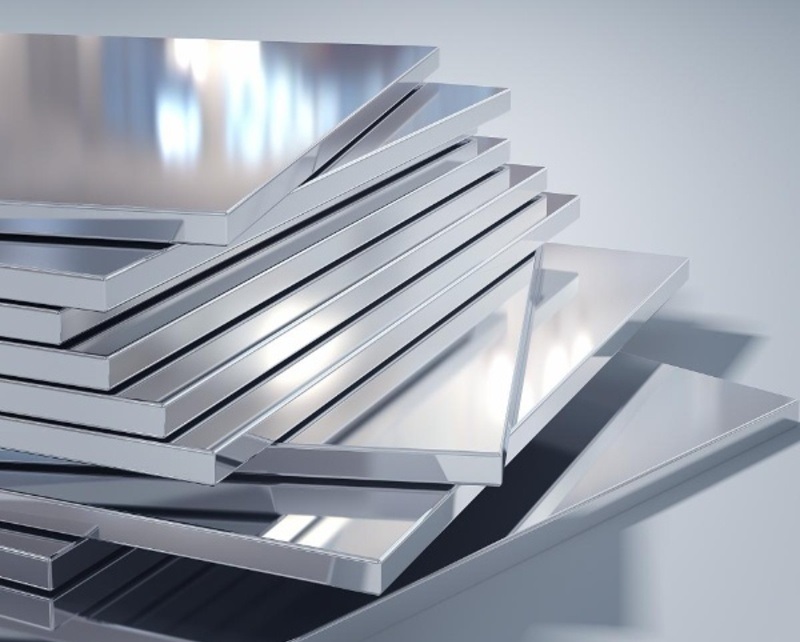
Current Location : Home > News > Industry News > The Role of Important Alloying Elements of Austenitic Stainless Steel (Part2)
The Role of Important Alloying Elements of Austenitic Stainless Steel (Part2)
Time:2021-07-27
Source:Wuxi Hongwang
Hits:340
Alloying elements have different effects on the properties of steel, sometimes beneficial, sometimes harmful. So, what function do important alloying elements in austenitic stainless steel have? In the previous article, we have already understood the influence of some alloying elements on austenitic stainless steel. Let us continue to understand today!
Nitrogen (N)
Nitrogen stabilizes and strengthens the austenitic stainless steel and can slow down the formation of the secondary phase. Both standard grades and high-performance austenitic stainless steels contain nitrogen.
In low-carbon standard grades (L steel), adding a small amount of nitrogen (up to 0.1%) can compensate for the strength loss caused by the low carbon content.
Whether it is a standard grade or high-performance austenitic stainless steel, nitrogen can provide strength and slow down carbide sensitization and secondary phase formation. Nitrogen also helps to improve the resistance to chloride pitting and crevice corrosion. Therefore, some high-performance austenitic stainless steels with the best corrosion resistance have nitrogen content as high as 0.5%.
When the chromium content exceeds the 10.5% threshold, the corrosion resistance to various environments is enhanced. Therefore, the chromium content of many brands is much higher than this value. For example, the chromium content of 304 stainless steel is 18%, and the chromium content of high-performance austenitic stainless steel is as high as 20%-28%.
Manganese (Mn)
Steel mills use manganese to deoxidize molten steel, so a small amount of manganese remains in all stainless steel. Manganese can also stabilize the austenitic stainless steel and increase the solubility of nitrogen in stainless steel. Therefore, manganese is used to replace some of the nickel in the 200 series stainless steel, increase the nitrogen content, and improve the strength and corrosion resistance. Some high-performance austenitic stainless steels are added with manganese to achieve the same effect.
Copper (Cu)
Copper can improve the corrosion resistance of stainless steel in reducing acids, such as certain mixed solutions of sulfuric acid and phosphoric acid. Copper is added as an alloying element in some high-performance austenitic stainless steels specially used in these environments.
Copper can improve the corrosion resistance of stainless steel in reducing acids, such as certain mixed solutions of sulfuric acid and phosphoric acid. Copper is added as an alloying element in some high-performance austenitic stainless steels specially used in these environments.
Silicon (Si)
In general, silicon is a beneficial element of austenitic stainless steel because it can improve the corrosion resistance of steel in concentrated acid environments and highly oxidized environments.
It is reported that high-silicon special stainless steel such as UNS S30600 has good pitting corrosion resistance. Like manganese, silicon can also be used to deoxidize molten steel. Therefore, a small amount of oxide impurities containing silicon, manganese and other deoxidizing elements will always remain in the steel. If the number of inclusions is too large, it will adversely affect the surface quality and polishability of the product.
In general, silicon is a beneficial element of austenitic stainless steel because it can improve the corrosion resistance of steel in concentrated acid environments and highly oxidized environments.
It is reported that high-silicon special stainless steel such as UNS S30600 has good pitting corrosion resistance. Like manganese, silicon can also be used to deoxidize molten steel. Therefore, a small amount of oxide impurities containing silicon, manganese and other deoxidizing elements will always remain in the steel. If the number of inclusions is too large, it will adversely affect the surface quality and polishability of the product.
Niobium (Nb) and Titanium (Ti)
These two elements are very effective carbide forming elements, which have the effect of reducing carbon content and reducing sensitization. Niobium carbide and titanium carbide can improve high temperature strength. 347 and 321 containing Nb and Ti are often used in boilers and refining equipment to meet the requirements of high temperature strength and weldability. They are also used in some deoxidation processes and, therefore, sometimes remain in high-performance austenitic stainless steels.
Sulfur (S) and Phosphorus (P)
The effect of sulfur on the performance of stainless steel is mixed. The most important beneficial effect is to improve the machinability; the main hazard is to reduce the hot workability, increase the amount of manganese sulfide impurities, and reduce the pitting resistance of stainless steel. High-performance austenitic stainless steel itself is difficult to hot work, so the sulfur content should be kept as low as possible, about 0.001%. Under normal circumstances, sulfur is not added as an alloying element to high-performance austenitic stainless steels. However, the sulfur content of standard stainless steel is generally high (0.005%~0.017%), the purpose is to increase the weld penetration of self-fusion welding and improve the machinability.
Phosphorus is a harmful element that will adversely affect the hot workability of forging and hot rolling. During the cooling process after welding, it will also increase the probability of thermal cracking. Therefore, the phosphorus content is always controlled to the lowest achievable level.

Hangwang Group is a professional manufacturer and supplier of stainless steel. If you have any needs in this regard, please contact us.
Related News
Characteristics and selection guide of medium frequency cold rolled non-oriented electrical steel
2023-12-04Stainless steel surface treatment process- beadblasting
2020-10-20Production precautions of stainless steel coils
2021-02-08The influence of the production technology of motor punching on the quality iron core
2023-08-31How to distinguish 304 stainless steel sheet and 201 stainless steel sheet?
2021-01-13The Technical Breakthrough of Electrical Steel Coils
2025-11-05






